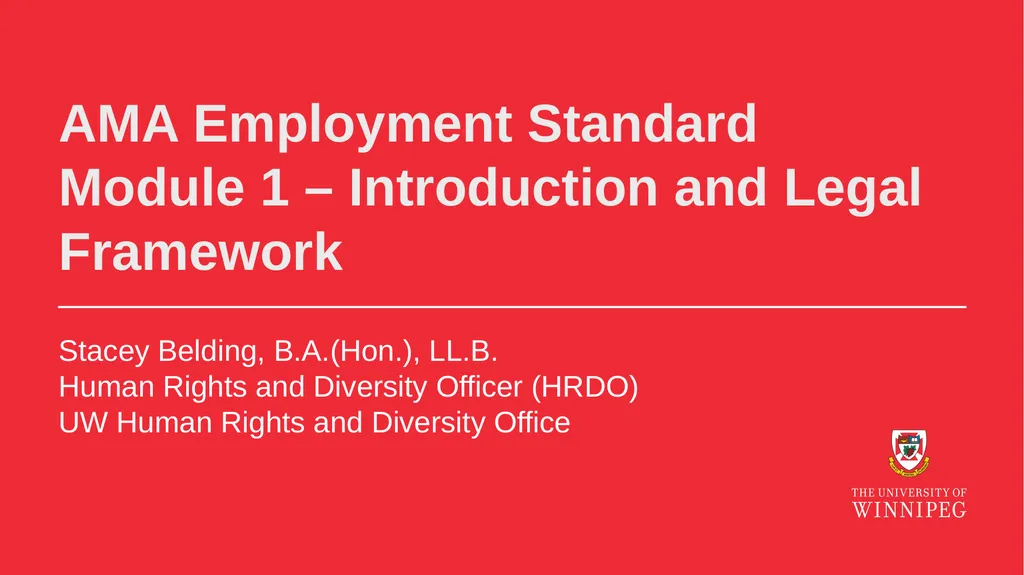
AMA Employment Standard Module 1 – Introduction
Author: conchita-marotz | Published: 2025-07-16
Description: AMA Employment Standard Module 1 Introduction and Legal Framework Stacey Belding, B.A.(Hon.), LL.B. Human Rights and Diversity Officer (HRDO) UW Human Rights and Diversity Office Module 1: Introduction and Legal Framework Purpose of the
Download Presentation
Download the PPT/PDF: Download
Transcript:
Loading transcript�